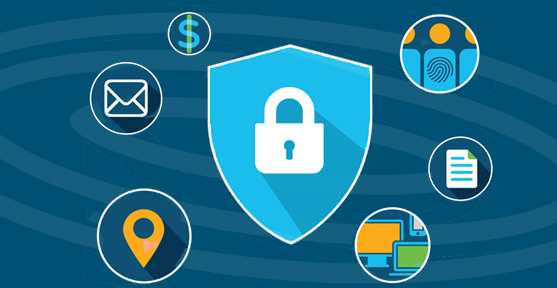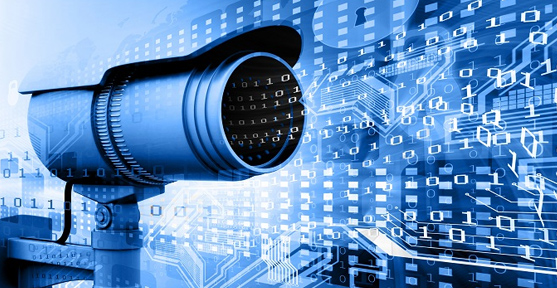Cyber-security is the practice of protecting systems, networks, applications and organizations from digital attacks.
Information system attacks are usually aimed at accessing, changing, or destroying sensitive information; extorting or
stealing money from users and financial entities; swindling of intellectual property and key business information;
interrupting normal business processes; damaging infrastructures and utilities; or systematically manipulating
informational facts to stir public misinformation and/or chaos.
In today's world where there are more devices than people, digital assets and systems are growing faster, and attackers
are becoming more innovative and well acquainted with existing technologies; implementing and maintaining effective
cyber-security measures is exceedingly challenging.
Cyber-security is all about:

Cyber-security is all about:
A successful cyber-security strategy will have multiple layers of protection spread across the computer systems, networks, applications, and/or data that must be kept safe. In most organizations, people, processes, and technology must all complement one another to create an effective firewall from cyber attacks.
People
System and end-users must be trained, understand and comply with basic data security principles like choosing strong passwords,
being wary of attachments in email, digital security certificates, and backing up data.
See these basic cyber-security principles, courtesy of Cisco Umbrella.
Processes
Organizations must have a framework for how they deal with both attempted and successful cyber attacks. Processes must be
enforced by policies, automation and training. Acumen has a well-framed framework that can help guide you based on NIST cybersecurity framework.
The framework details on how your organization can identify attacks, protect systems, detect and respond to threats,
and recover from successful attacks.
Technology
Technology is essential to giving organizations and individuals security tools needed to protect themselves and
their systems from cyber attacks. Four main entities must be protected: endpoint devices like computers,
smart devices, and routers; networks; data and the cloud.
Common technology used to protect these entities include next-generation firewalls,
DNS filtering, malware protection, antivirus software, system hardening, encryption, security certificates,
and email security solutions.
Cyber-security Importance:

Cyber-security Importance:
With the advent of sophisticated digital systems and ever connected devices, the benefit from advanced cyber-security is a self-explanatory requisite. At an individual level, a cyber-security attack can result in everything from identity theft, to extortion attempts, to the loss of important data like family photos and compromise of personal cyber profile.
Types of cyber-security threats:
Ransomware
Ransomware which is also known as Crypto-ransomware in some cases is a type of malicious software or hidden
infecting embedded code. It is designed to extort money by blocking access to files or the computer system until
the ransom is paid. Paying the ransom does not guarantee that the files will be recovered or the system restored.
And usually having an expert help you mitigate such issues before and unfortunately after is highly recommended.
Malware
Malware is a type of software designed to gain unauthorized access, to cause damage to a computer or
pop-up unwanted ads and browser redirects.
Malware includes viruses along with other types of software such as Trojan horses, worms, spyware, and adware.
Social Engineering
Social engineering is a tactic that adversaries and hackers use to trick you into revealing sensitive information such as passwords.
They can solicit a monetary payment or gain access to your confidential data.
Social engineering can be combined with any of the threats listed above to make you more likely to click on links,
download malware, or trust a malicious source. Activities such as session hi-jacking, vertical privilege escalation,
and computer take-over are sometimes carried out using social engineering tactics.
Phishing
Phishing is the practice of sending fraudulent emails that resemble emails from reputable sources or
clickbaiting to cajole users to click on a link and download malicious software. The aim is usually to steal sensitive
data like credit card numbers, sensitive data and login information. It’s the most common type of cyber-attack.
Acumen will help you set a plan on how to mitigate phising threats.
InfoSec

InfoSec:
Information security, often referred to as InfoSec, refers to the processes and tools designed and deployed to protect sensitive business information and supporting data from modification, disruption, destruction, and inspection. InfoSec is evolving and newer standards, trainings, accountability are constantly being introduced, analyzed, tested and implemented.
Getting to know InfoSec:
InfoSec vs. Cyber-security
Information security and cybersecurity are often confused. InfoSec is a crucial part of cyber-security, but it refers
exclusively to the processes designed for data security. Cyber-security is used in a more general context and can
include InfoSec.
ISMS
An ISMS is a set of guidelines and processes created to help organizations to mitigate data breach issues.
By having a formal set of guidelines, businesses can minimize risk and can ensure work continuity in case of
a staff change. ISO 27001 is a well-known specification for an ISMS implementation.
GDPR
In 2016, the European Parliament and Council agreed on the General Data Protection Regulation. In the spring of 2018,
the GDPR began requiring companies to:
- provide data breach notifications
- appoint a data-protection officer
- require user consent for data processing
- anonymize data for privacy
All companies operating within the EU are required to comply with these standards.
Types of InfoSec
- Application security
- Cloud security
- Cryptography
- Infrastructure security
- Incident response
- Vulnerability management
Firewall

Firewall:
A firewall is a network security device or application that monitors incoming and outgoing network traffic and decides whether to allow or block specific traffic based on a defined set of security rules. Firewalls have been around for over two decades. They establish a checkpoint between secured and controlled internal networks that can be trusted and untrusted outside networks, such as the Internet.
Types of Firewalls:
Packet-Filtering Firewalls
As the most "basic" and oldest type of firewall architecture, packet-filtering firewalls basically create a
checkpoint at a traffic router or switch. The firewall performs a simple check of the data packets coming
through the router—inspecting information such as the destination and origination IP address, packet type,
port number, and other surface-level information without opening up the packet to inspect its contents.
If the information packet doesn’t pass the inspection, it is dropped. These types of firewalls are not resource-intensive.
Circuit-Level Gateways
As another simplistic firewall type that is meant to quickly and easily approve or deny traffic without consuming
significant computing resources, circuit-level gateways work by verifying the transmission control protocol
(TCP) handshake. This TCP handshake check is designed to make sure that the session the packet is from is legitimate.
These firewalls do not check the packet itself. So, if a packet held malware, but had the right TCP handshake,
it would pass right through. This is why circuit-level gateways are not enough to protect your business by themselves.
Proxy firewall
A proxy firewall serves as the gateway from one network to another for a specific application.
Proxy servers can provide additional functionality such as content caching and security by preventing
direct connections from outside the network. However, this also may impact throughput capabilities
and applications that could utilize it. These are sometimes known as application-level gateways.
Stateful inspection firewall
This is a traditional firewall. It is a stateful inspection firewall and allows or blocks traffic based on
state, port, and protocol. It monitors all activity from the opening of a connection until it is closed.
Filtering decisions are made based on both administrator-defined rules as well as context,
which refers to using information from previous connections and packets belonging to the same connection
Unified threat management (UTM) firewall
A UTM solution typically loosely combines the functions of a stateful inspection firewall with intrusion
prevention and antivirus. It may also include additional services and often cloud management.
UTMs focus on simplicity and ease of use.
Next-generation firewall (NGFW)
Today's Firewalls are more than simple packet filters and stateful inspectors.
Most companies are deploying next-generation firewalls to block modern threats such
as advanced malware and application-layer attacks.
Next-generation firewall are designed to include:
- Standard firewall capabilities like stateful inspection
- Integrated intrusion prevention
- Application awareness and control to see and block risky apps
- Upgrade paths to include future information feeds
- Techniques to address evolving security threats
These capabilities are increasingly becoming the standard for most companies but in reality NGFWs perform
a lot more types of security functions.
Threat-focused NGFW
Threat-focused NGFW firewalls include all the capabilities of a traditional NGFW and also provide
advanced threat detection and remediation. With a threat-focused NGFW you can:
- Know which assets are most at risk with complete context awareness
- Quickly react to attacks with intelligent security automation that sets policies and hardens your defenses dynamically
- Better detect evasive or suspicious activity with network and endpoint event correlation
- Greatly decrease the time from detection to cleanup with retrospective security that continuously monitors for suspicious activity and behavior even after initial inspection
- Ease administration and reduce complexity with unified policies that protect across the entire attack continuum
InfoSec

Other Cyber-security Threats:
Cyber-security issues are numerous and complex in nature. Some security issues are multifaceted and the attacks are carried out from various fronts using different attack means. As cyber-security specialists, security consultants must equip themselves with extensive knowledge in the field of cyber-security.
Security vulnerabilities:
Malware
Virus, Worms, Trojan virus, Spyware, Adware,
Ransomware, Fileless malware, botnet, Rootkit, Backdoor, Keyloggers,
Rogue security software, Browser Hijacker, File Infectors, Macro viruses,
Grayware, and others
Phishing
Phishing is the practice of sending fraudulent communications that appear to come from a reputable source.
It is usually done through email. Clickbaits are sometimes used for this purpose as well. Some other forms
can be links in text messages, social media and blog messages, free game and music download links, etc.
Spamming is a common form of carrying out such attacks. The best method of combating phising is via user training and
having anti-phising set of tools and procedures throughout an enterprise systems. The amount of time and
material cost phising attacks cost to organization is behemoth compared to other types of incidental losses
and as such it must be actively mitigated.
DDoS
A distributed-denial-of-service, or DDoS, attack is a simultaneous attack via data requests to a central server or network.
The attacker/s generate these requests from multiple compromised systems and in somecases use botnets.
In doing so, the attacker hopes to exhaust the target's Internet bandwidth and RAM.
The ultimate goal is to crash the target's system and disrupt its business. Depending the types of system
setup, crashes in one section of the system or service can allow for the attacker to compromise a system by having
unchallenged access to parts of the system that are still functioning and maybe left unprotected. DDoS attack prevention
are multipronged and require some form of robust firewall and firewall rules on repeated excessive frequent requests,
system failure testing, failure protection, failure recovery, database of attacking IP addresses and servers,
information sharing via setups like blocklist, timeouts, thresholds, alerts, predictive analysis, etc.
Digital Signage

Perimeter Security and Surveillance
Digital Signage
Digital signages are better, faster, and less expensive means of communicating to your staff, visiting customers, faculty members and specialized groups such security staff.
Using simple Digital Signage it has become easier to create your content and share it to every room, office, or campus. Your communication and security team will be in control of approvals and centrally manage or update displays while giving access to other staff and employees to create content of their own as a supplementary information dissemination platform.
Digital signage helps you with providing people instructions on available resources and pertinent information. You can keep people updated with security announcements, training schedules, daily tips and upcoming events.
Digital signage will help get engaged with your programs and initiatives. It's easy to show your content on a single display or hundreds, and the content could include advisory and safety info such as weather and traffic updates of applicable location.
Video Surveillance

Video Surveillance
We live in a constant threat of attacks from fringe and dangerous people. Furthermore having real-time info on hazards such as fire, accidents, break-ins, etc., helps us mitigate situations faster and prudently.
Visible surveillance cameras are also effective and proven crime prevention tools. They usually discourage and deter criminals from damaging property, stealing assets, and entering without authorization.
Surveillance cameras will also enhance employee security. Cameras can be installed in parking garages, entry doors and risky areas of buildings.
They can also be used to aid with evidence during injury on comapny property and associated lawsuit. Such evidence will help show the real story as opposd to relying on witness testimonies and thereby potentially deterring frivolous lawsuits.
Remote video surveillance can keep 24x7 watchful eye on company property and assets from remote locations with built-in alerts, etc. Cameras also help with operations monitoring and studying productivity and data analysis. With recent advents in artificial intelligence (AI), video footage can be analyzed to study building traffic, employee facility usage optimaization and other security related measures. Such as the AI automatically identifying cars that are new to the building, cars with missing parking permit, cars that may have left their head-lights on, people in distress that are trying to flag security, etc.
Digital and Biometric Access

Digital and Biometric Access
Security needs are constantly changing. Entry access control systems and keyless system access is becoming more common for machines, enterprise property assets and even small businesses. Access control systems provide people secure and safe access to their buildings, sensetive housing areas, and interior offices.
Access control systems also provide access logs and historical data. It will help track employees’ activity and allow administrators to see exactly what properties were accessed by whom while at the same time preventing access to unauthorized areas. Additionally, customizable reports can be generted with access and security information, alarm details, actual open and close hours and more. These reports can be available via automated email, mobile messages or web pages. In addition accesses can be turned on and off remotely as needed. Such reports can be useful when investigating vandalism and theft, as well as can be used with employee performance alongside timecards.
Another benefit is not using physical keys that can be lost or can become hard and costly to change as opposed to digital access using secured card or biometric information. If such a card is lost or an employee quits, the access can be easily updated or deleted from the database. One key for multiple locks helps the control. Security personel do not have to carry multiple keys for multiple properties any longer, since digital access is readily usable across various access controls.
Acumen can help you with your security needs with an expert aspect and data.

